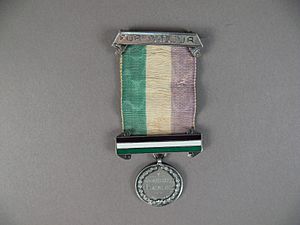Hunger Strike Medal facts for kids
Quick facts for kids Hunger Strike Medal |
|
|---|---|

Medal awarded to Myra Sadd Brown in 1912
|
|
| Awarded by Women's Social and Political Union | |
| Established | August 1909 |
| Ribbon | Green, White, Purple |
| Motto | 'For Valour' |
| Criteria | Awarded by the to suffragette prisoners who had gone on hunger strike during their imprisonment. |
| Grades | Force-feeding – additional striped enamel bar |
| Statistics | |
| Total inductees | 81 known |
The Hunger Strike Medal was a special silver medal. It was given to suffragette prisoners between 1909 and 1914. The Women's Social and Political Union (WSPU) awarded these medals. Suffragettes were women who fought for the right to vote.
Many suffragettes went on hunger strike while in prison. They did this to protest for women's suffrage, which means women's right to vote. Some women were even force-fed during their strikes. Their medals had special marks to show this.
The WSPU gave out medals like these to keep spirits high. They wanted to encourage women to stay loyal to the cause. Sylvia Pankhurst designed the Hunger Strike Medals. They were first given out in August 1909. Later, women received their medals when they were released from prison.
Contents
Why the Medal Was Created
On July 5, 1909, a suffragette named Marion Wallace Dunlop started a hunger strike. She was in Holloway Prison. She had been jailed for writing a message from the Bill of Rights on the wall of the House of Commons.
Marion Wallace Dunlop believed she was a political prisoner. She started her strike to protest how she was treated. Her strike lasted 91 hours. The prison released her to prevent her from dying. Many other suffragettes quickly followed her example.
What the Medal Looks Like
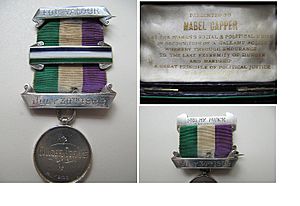
The Hunger Strike Medal is round and made of silver. It hangs from a ribbon with the WSPU's colors: purple, white, and green. The ribbon is attached to a silver pin bar. This bar is engraved with the words 'For Valour'. This phrase is similar to what is found on the Victoria Cross, a famous military medal.
The front of the medal says 'Hunger Strike'. The back has the recipient's name surrounded by a laurel wreath. The medals were made by a company called Toye & Co. Each medal cost the WSPU about £1.00.
Silver bars could be added to the medal. These bars showed how many times a person went on hunger strike. The back of each bar had the date the person was arrested. Special purple, white, and green enamel bars were added for those who were force-fed. These also had the date of their arrest.
For example, the sculptor Edith Downing's medal bar says 'Fed by Force 1/3/12'. This was the date she was imprisoned and later force-fed. Some medals had more than one bar. This showed multiple hunger strikes or force-feeding incidents.
How Medals Were Given Out
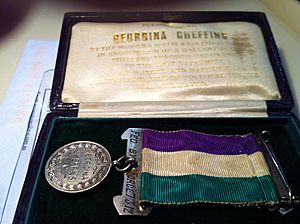
Each Hunger Strike Medal came in a purple box. The inside of the box was lined with green velvet. The lid had a piece of white silk. On the silk, a special message was printed in gold. It said: 'Presented to [name] by the Women's Social and Political Union in recognition of a gallant action, whereby through endurance to the last extremity of hunger and hardship a great principle of political justice was vindicated'. This message honored the bravery of the women.
Medals Found Today
Many Hunger Strike Medals still exist today. They are important pieces of history.
- The Museum of London has the medal given to the suffragette leader Mrs. Emmeline Pankhurst. She went on hunger strike in 1912.
- Helen MacRae's Hunger Strike Medal was sold at auction in 2015 for £12,300. An auction manager said these medals are "among the most historically important items."
- A medal belonging to Elsie Wolff Van Sandau was found in a drawer. She was arrested for breaking a window in 1912. Her medal sold for £12,500 in 2019.
- Selina Martin's medal was sold in 2019 for £27,000. It was bought by the National Gallery of Victoria, Australia.
- The Museum of New Zealand Te Papa Tongarewa bought Frances Parker's medal in 2016.
- The Museum of Australian Democracy has Charlotte Blacklock's medal.
- Kate Williams Evans's medal was sold in 2018 for £48,640. It is now at Amgueddfa Cymru – Museum Wales.
- Rosamund Massy's medal is buried inside the base of Emmeline Pankhurst's statue in London.
- In 2023, the Glasgow Women's Library bought Maud Joachim's medal. It was for the first WSPU hunger strike in Scotland.
Medal Recipients
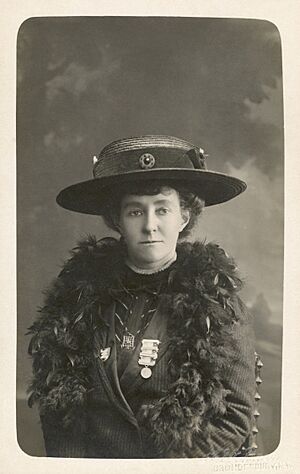
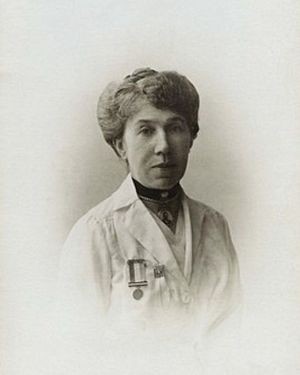
As of late 2023, there are 82 known people who received this medal. Here is a list of some of them. If known, the dates of their arrest are also included.
- Mary Ann Aldham
- Mary Sophia Allen
- Laura Ainsworth
- Helen Archdale - October 19, 1909
- Charlotte Blacklock
- Violet Bland
- Myra Sadd Brown
- Constance Bryer
- Evaline Hilda Burkitt
- Lucy Burns
- Leila Gertrude Garcias de Cadiz
- Kate E. Teresa Cardro
- Mabel Capper - July 30, 1909
- Eileen Mary Casey
- Joan Cather - March 4, 1912
- Grace Chappelow - September 4, 1909
- Georgina Fanny Cheffins
- Leonora Cohen
- Constance Collier
- Jessie Landale Cumberland - May 21, 1914
- Alice Davies
- Emily Davison
- Violet Mary Doudney
- Caroline Lowder Downing
- Edith Downing
- Flora Drummond
- Elsie Duval
- Norah Elam - July 28
- Kate Williams Evans - March 4, 1912
- Caprina Fahey - March 14, 1914
- Theresa Garnett
- Ellison Scotland Gibb
- Margaret Skirving Gibb
- Nellie Godfrey
- Joan Lavender Bailie Guthrie
- Florence Haig
- Nellie Hall - July 21, 1913
- Alice Hawkins - September 4, 1909
- Georgina Healiss
- Beth Hesmondhalgh
- Anna Hutchinson
- Elsie Howey
- Maud Joachim – October 19, 1909, March 1, 1912
- Ellen Isabel Jones
- Violet Jones - September 4, 1909, December 8, 1909
- Winifred Jones (suffragette)
- Clara Lambert
- Laura Geraldine Lennox
- Lilian Lenton
- Anna Lewis - February 10, 1914
- Ethel Lewis
- Louise Lilley
- Gertrude Golda Lowy
- Constance Lytton - October 9, 1909
- Margaret Macfarlane
- Helen MacRae
- Grace Marcon - October 26, 1913
- Kitty Marion
- Charlotte Marsh
- Katherine "Kitty" Marshall
- Selina Martin - August 20, 1909
- Rosamund Massy
- Frances McPhun
- Margaret McPhun
- Lillian Metge - August 10, 1914
- Ethel Moorhead - August 29, 1912, November 29, 1912, January 29, 1913, October 15, 1913
- Edith New
- Marie du Sautoy Newby - March 4, 1912
- Frances Outerbridge
- Emmeline Pankhurst - March 1, 1912
- Frances Parker
- Alice Paul
- Pleasance Pendred
- Mary Phillips
- Mary Richardson
- Edith Rigby
- Rona Robinson - August 20, 1909, October 15, 1909
- Grace Roe
- Bertha Ryland
- Arabella Scott
- Genie Sheppard
- Dorothea Chalmers Smith
- Geraldine Stevenson
- Grace Cameron Swan
- Janie Terrero
- Catherine Tolson - September 4, 1909
- Leonora Tyson
- Elsie Wolff Van Sandau - March 4, 1912
- Marion Wallace Dunlop
- Olive Grace Walton
- Helen Kirkpatrick Watts
- Olive Wharry
- Gertrude Wilkinson
- Agnes Wilson
- Laetitia Withall
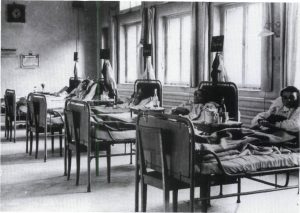
See also
 In Spanish: Medalla de huelga de hambre para niños
In Spanish: Medalla de huelga de hambre para niños
- Holloway brooch
- Holloway banner
- Suffrage jewellery
- The Suffragette Handkerchief


